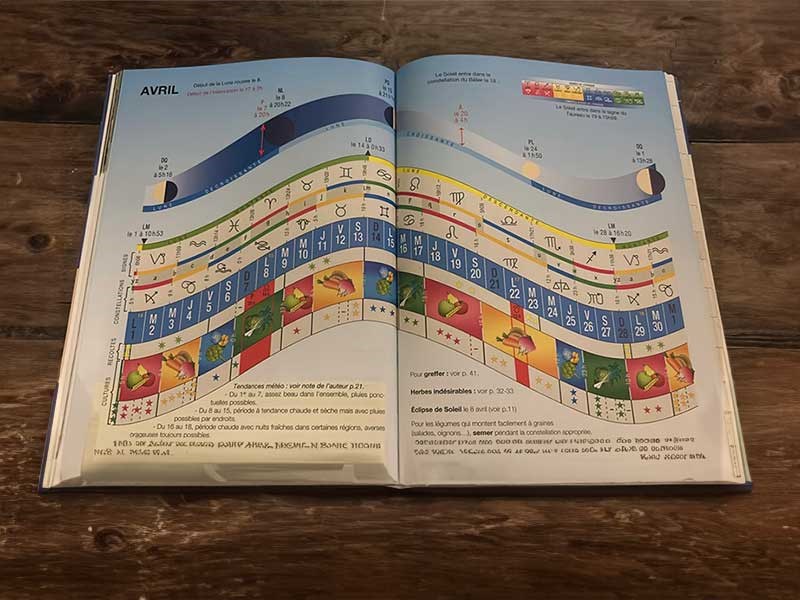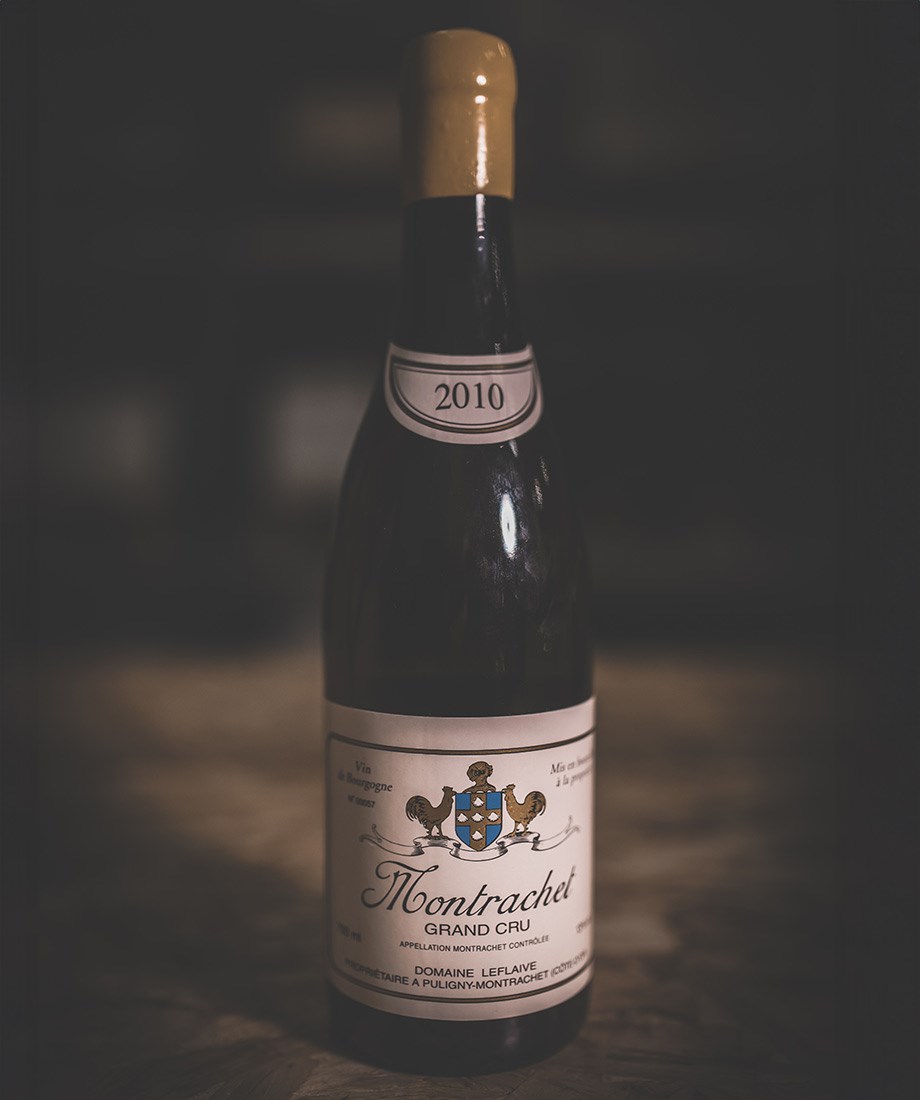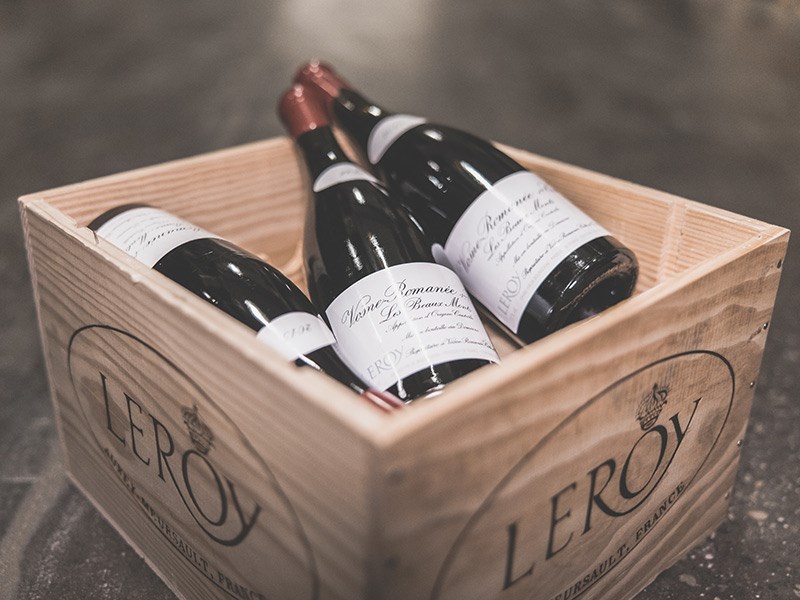Article - RareWine Academy
Biodynamic Wine Production - From Cosmos To Cellar
Discover when your wine truly shines. Biodynamic practices are making waves in winemaking— but do they really belong? Uncover the truth here...
You have probably heard of biodynamic wine production. And you might also be aware that biodynamics aims to give more than it takes. Thus, biodynamics is regenerative, sustainable, and ethically grounded. Everything in nature is interconnected, and the cosmos plays a much more significant role than you might think.
Burgundy, a wine region that needs no introduction. It's home to high-profile producers like Domaine Leflaive and Domaine Leroy, who have not only put Burgundy on the global map but also made biodynamics a crucial part of their winemaking process. We'll delve into their stories later.
So, what exactly is biodynamics? How do moon phases impact the way winemakers work in the vineyards? And when does your wine actually taste best? You can just read on to find out.
Rudolf Steiner, Anthroposophy, and Biodynamics
Rudolf Steiner was born in Hungary in 1861. He was a philosopher, esotericist, and the founder of anthroposophy – and he is credited with creating biodynamic agriculture. Early in his life, Steiner began studying Goethe and German idealism, with a particular focus on Hegel and Johann Gottlieb Fichte. Based on these studies, Steiner founded the Anthroposophical Society in 1913. The anthroposophical view holds that the human being consists of the soul, body, and spirit and that reincarnation is a fact.
The universe is thus governed by both known physical forces and, to a large extent, cosmic forces. These particularly influence the life processes in animals, humans, and plants. This unique understanding of the universe is at the heart of biodynamics. Biodynamics emerged as part of Steiner's broader philosophy and spiritual science, which integrated agriculture with cosmic and spiritual principles – aiming to create a form of agriculture that was both a living and harmonious mechanism.
In response to farmers' concerns about declining soil quality and the nutritional value of agricultural products, Steiner held a series of lectures at the Koberwitz estate in Poland in 1924. These lectures are now known as the 'Agricultural Course' and formed the basis for biodynamic agriculture. Steiner presented a holistic approach to farming, which included the use of special preparations made from herbs, minerals, and animal organs, as well as calendar-based timing for sowing and harvesting to harmonize with cosmic rhythms. This comprehensive approach inspired a new way of thinking about agriculture.
Steiner's principles were quickly adopted and further developed by his followers, forming the foundation of the biodynamic movement. This approach views the farm as a self-sustaining organism and promotes biodiversity, soil health, and the balance between plants and animals.
Since then, biodynamic agriculture has grown into a global practice valued for its sustainability and holistic approach to farming.
 Rudolf Steiner
Rudolf Steiner
First Steiner – Then Maria Thun
Maria Thun embraced Steiner's philosophy and entirely dedicated herself to biodynamic agriculture. Thun grew up in the German town of Marburg, north of Frankfurt. Her interest in biodynamics began early, as she observed her father studying the morning and evening skies for days to find the perfect time to sow his crops. Her father’s dedication to the heavens influenced Thun, making Steiner’s ideas not so distant from what she had witnessed in her childhood – the interaction between plants and the cosmos. This led her to study at the Institute for Biodynamic Research in the 1940s.
In the 1950s, Maria Thun embarked on a series of groundbreaking experiments, exploring the impact of cosmic cycles and celestial body positions on plant growth. Her pioneering work quickly established her as a leading figure in the field of biodynamics, particularly for her development and popularization of the biodynamic sowing calendar.
She observed that plant responses to sowing varied depending on the moon's and planets' positions relative to the star constellations. She created a sowing calendar based on her experiments that guided farmers and gardeners on the optimal times for sowing, planting, and harvesting different crops.
Maria Thun's calendar, known as 'Maria Thun's Sowing Calendar,' was first published in 1963 and has since become a cornerstone for biodynamic farmers and gardeners worldwide. This comprehensive resource provides detailed guidance on aligning agricultural practices with cosmic rhythms to improve soil health and crop quality, a testament to the global impact of Thun's work.
Maria Thun and Radishes: Zodiac Signs, Lunar Nodes, and Planetary Influences
Maria Thun's dedication to experimentation was unparalleled. Her meticulous approach to one of her most famous experiments, involving the growth of radishes, is a testament to her thoroughness. She sowed radish seeds at different times throughout the month and over extended periods, systematically recording the moon’s position relative to various zodiac signs.
Thun's findings were nothing short of surprising. She discovered that radishes sown under specific zodiac signs developed differently and better than those sown under others, a revelation that piqued the interest of many.
Thun discovered that radishes sown when the moon was in earth signs (Taurus, Virgo, or Capricorn) produced larger and more robust roots. In contrast, radishes sown when the moon was in water signs (Cancer, Scorpio, or Pisces) tended to develop more foliage but had weaker roots.
Thun also studied the effects of sowing radish seeds during the new moon, full moon, and intermediate phases. Plants sown during the waxing moon (between the new moon and full moon) showed higher growth energy and were more resistant to diseases. According to Thun, plants harmonize with cosmic forces, strengthening their natural defense mechanisms.
The moon was not the only factor Thun focused on. She also noted that planetary aspects could positively influence plant health. She found that plants tended during periods when Saturn’s position was favorable and exhibited stronger structures and greater stress resistance. Additionally, she observed that Jupiter positively affected plants’ ability to grow vigorously and develop healthily.
Besides Saturn and Jupiter, Thun emphasized the position of the lunar nodes (the points where the moon’s orbit crosses the ecliptic) and their relationship to the planets. She believed these relationships could either promote or hinder certain aspects of plant growth, depending on the current cosmic configurations.
Thun also differentiated how different planets influenced various types of plants. For instance, Mars, with its connection to fire and energy, mainly affected fruit and seed development. At the same time, Venus, associated with love and harmony, was thought to have a particular influence on flowers and leafy plants.
Maria Thun’s work has not only had a profound impact on biodynamic agriculture but has also inspired a generation of farmers. By integrating practical observations with Rudolf Steiner’s cosmic and spiritual principles, she has significantly strengthened and spread the biodynamic movement.
 The Moon Calender
The Moon Calender
The Influence Of The Moon Calendar On Biodynamics
Some are dedicated to biodynamics. Then, some adopt certain practices from it. And, of course, some view biodynamic wine production as a kind of religion with no basis in reality. Regardless of which group you belong to, it cannot be denied that the moon's gravitational pull creates tides on Earth.
As the moon orbits Earth, its gravitational pull causes the oceans to bulge outward on the side of the Earth facing the moon. This pull is resisted by inertia on the opposite side of the Earth, creating a secondary bulge and a high tide there as well. The regularity of this process, with two high tides and two low tides every 24 hours and 50 minutes, underscores the predictability of the moon's influence on tides.
Given that the moon influences water, it may not be surprising that winemakers and wine enthusiasts also look to the moon when it comes to sowing, harvesting, and tasting.
Domaine Leflaive’s Commitment To Biodynamics
Domaine Leflaive is one of Burgundy’s most prestigious wineries, and its dedication to biodynamic wine production has not gone unnoticed; it has been (and continues to be) a pioneer in biodynamic winemaking. Anne-Claude Leflaive, in particular, deserves much credit for elevating the standard after she took over Domaine Leflaive in 1993 and decided to convert all the vineyards to biodynamic farming. Her significant improvements convinced other wine producers to also turn their attention to biodynamic principles.
At Leflaive, great emphasis is placed on preserving and enhancing soil health. They use biodynamic preparations such as composted herbs, manure, and quartz, which are sprayed on the soil and grapevines to stimulate microbial life and soil vitality. These preparations are believed to balance and improve the soil’s energy.
Planting, pruning, and harvesting at Leflaive are carefully timed according to a biodynamic calendar that follows lunar and plant cycles. Leflaive believes that these cycles influence plant growth and health.
No synthetic pesticides, herbicides, or artificial fertilizers are used at Leflaive – only natural infusions, minerals, and biological preparations are employed to protect the plants from diseases and pests. Beneficial plants and herbs are planted between each row of vines to attract helpful insects and improve soil health. To minimize soil compaction, horses are used instead of tractors. They also rely on natural yeast strains found in their cellars and vineyards, ensuring that the wine reflects the terroir and vintage, making the wines authentic.
And Domaine Leflaive is not alone in their commitment to biodynamics.
 Domaine Leflaive
Domaine Leflaive
Madame Lalou Bize-Leroy's Dedication To The Cosmos
You cannot speak of biodynamic pioneers without mentioning Lalou Bize-Leroy, a living legend who creates enchantment in Burgundy's wine landscape. She is renowned for her deep understanding of and respect for the forces of nature. Like Leflaive, she takes an almost spiritual approach to winemaking, viewing the earth as alive and dynamic. For her, biodynamic agriculture is about creating a symbiosis between humans and nature, where the vine is part of a larger, living ecosystem. This philosophy permeates every aspect of production at Domaine Leroy.
For a whole lifetime, the vineyards have benefited from Madame Leroy’s meticulous care and dedicated focus. Wine lovers do as well. Leroy has devoted her life to wine and biodynamics. She uses Preparation 500 (Horn fertiliser), which involves filling a cow horn with composted fertiliser, burying it in the soil in the fall, and digging it up in the spring. The compost revitalizes the soil, enhancing both its structure and microbial life – reportedly strengthening the vine’s roots and their ability to absorb nutrients.
She also uses Preparation 501 (Horn Silicate). Quartz is crushed, placed in a cow horn, and buried over the summer. When dug up, it is sprayed on the vines in tiny doses. This preparation increases the plant’s ability to absorb light and promotes grape ripening, improving the wine’s aromatic complexity and structure.
Nothing is left to chance. Leroy uses herbal preparations from nettles, chamomile, yarrow, and oak bark. These are brewed into teas and infusions and sprayed on the vines to enhance their disease resistance and improve soil health.
When Leroy turned her focus and winemaking practices to biodynamics, she was considered radical by many. Since then, she has become an unparalleled and consistent pioneer in biodynamic winemaking. This practice is deeply rooted in cosmic cycles. All vineyard activities, from planting to harvest, follow the lunar and planetary calendar. Lalou Bize-Leroy believes these cycles directly impact the vitality of the vines and the quality of the wine. For example, pruning and harvesting are done on days when the moon is in a favorable position to ensure optimal plant energy and balance.
Whether one is a proponent of biodynamics or not, Leroy’s wines are among the most sought-after in the world.
 Cow horn fertiliser
Cow horn fertiliser
Biodynamic Certification – Is It Relevant?
If you, as a wine producer, want to achieve certification for biodynamic wine production, you must go through a process that ensures your practices meet the requirements set by certification bodies such as Demeter, ECOCERT, or Biodyvin. Certification involves extensive testing of practices, vineyards, preparations, and annual inspections to ensure that producers maintain their practices.
The influence of certified producers like Leflaive and Leroy extends far beyond their vineyards. Their practices have inspired numerous wine producers globally to embrace biodynamic methods. However, it's important to note that for many producers, certification is not the ultimate goal, and certainly not a necessity. Charles Lachaux, a rising star in Burgundy, represents this new generation. While he works biodynamically and organically, he prefers not to be defined by certification labels.
Many producers share this approach to biodynamics. Notable names include Domaine de la Romanée-Conti, Louis Roederer, Domaine Dujac, Pierre-Vincent Girardin, Tablas Creek Vineyard, Jacques Selosse, and Gaja.
While certification may not be a crucial factor for all producers, the value of biodynamics is becoming increasingly recognized. This is evident in the growing number of producers who are incorporating elements of biodynamics into their practices.
One thing is practicing biodynamics in the vineyard. Another is that biodynamic enthusiasts also navigate cosmic rhythms when it comes to consuming wine.
When Wine Tastes Best? Root Day, Flower Day, Leaf Day, or Fruit Day?
Maria Thun adopted her father’s enthusiasm for the cosmos, and her passion was passed on to her son, Matthias Thun, who became a pivotal figure in developing When Wine Tastes Best: A Biodynamic Calendar for Wine Drinkers. Matthias created the calendar to help wine lovers around the world find the best times to enjoy wine, based on the biodynamic principles his mother worked with—the very principles his grandfather had laid the seeds for.
The calendar is based on cosmic rhythms, including the phases of the moon and the positions of the planets, which are believed to influence the taste and quality of wine. According to Matthias Thun, the wine will taste best on specific days, depending on whether those days are "Fruit Days," "Leaf Days," "Root Days," or "Flower Days"—terms that originate from biodynamic agriculture.
Fruit Day
According to the biodynamic calendar, if you want to experience wine at its best, you should taste it on a Fruit Day. Fruit Days occur when the moon is in a fire sign: Leo, Sagittarius, or Aries. Tasting wine on a Fruit Day will make the fruit flavors in the wine more intense, the wine richer, and much fuller.
Leaf Day
The biodynamic calendar suggests that plants focus on producing chlorophyll on so-called Leaf Days. Chlorophyll is a pigment that plays a crucial role in photosynthesis and is vital for the plant's survival. Leaf Days occur when the moon is in a water sign: Pisces, Scorpio, or Cancer. According to the biodynamic calendar, if you drink wine on a Leaf Day, you may find it less sweet and dominated by a vital mineral or earthy taste.
Root Day
Root Day is the worst day to drink wine. When the moon is in an earth sign—Capricorn, Taurus, or Virgo—wines tend to taste more subdued. A biodynamic enthusiast would never dare open a wine bottle on a Root Day.
Flower Day
When the moon is in an air sign, it’s a Flower Day. The air signs are Gemini, Libra, or Aquarius, and drinking wine on a Flower Day is best suited for aromatic wines, mainly white wines with floral notes, as they tend to pair beautifully with the qualities of a Flower Day.
When Wine…
With the "When Wine" app, you can check each day to see which of the four types of days is currently active. Taste is, of course, subjective, though we often see consensus among the world's leading wine critics when it comes to tasting and evaluating wine—but that's another discussion. Using the app, you can conduct your study and find out if the exact wine tastes different on a Root Day compared to a Flower Day. Biodynamic enthusiasts have no doubt— for them, there is a difference.
 Domaine Leroy
Domaine Leroy
Anecdotal Evidence And Scientific Skepticism
Steiner initiated it, Thun expanded it, and some of the world’s leading wine producers have embraced the cosmos. Biodynamics has become widely accepted and applied within biodynamic circles—lunar calendars, planetary influences, and a biodynamic philosophy that farmers, winemakers, and gardeners worldwide report positive results from. However, from the perspective of conventional scientific wisdom, this is often criticized as being based on anecdotal evidence.
The criticism is that Thun's work lacks rigorous empirical evidence under controlled conditions, which is necessary to validate her claims about cosmic influences.
Then again, one may question whether scientific validation is relevant. Does biodynamics need a scientific seal of approval to justify its existence? Not for Leroy. Not for Leflaive. Biodynamics clearly has its place in agriculture—a relevance that is becoming increasingly evident in the wine world as a growing number of producers incorporate biodynamic practices into their winemaking. You could be part of this progressive movement.
Try it out. Dedicate yourself to biodynamics. Or don’t.
